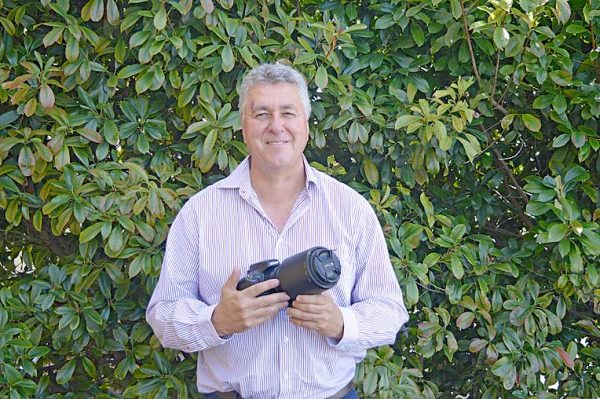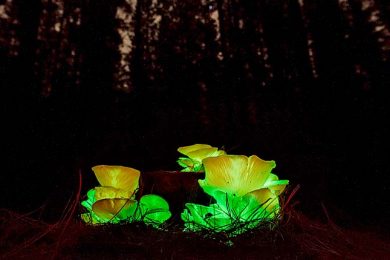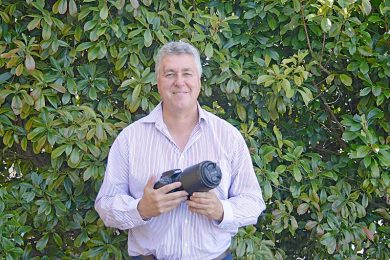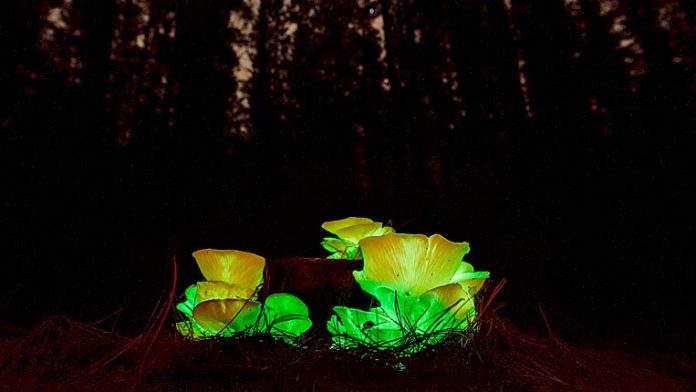
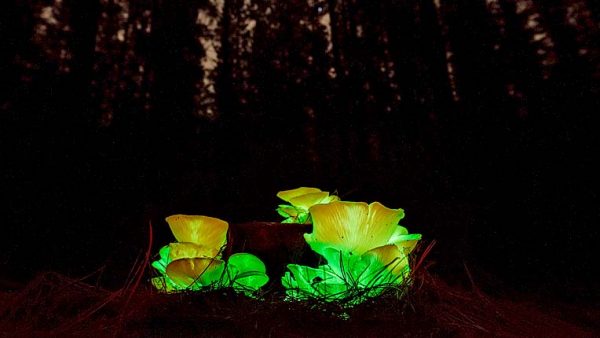
PREPARATIONS for this autumn’s glow-in-the-dark mushroom spectacle are well under way with ForestrySA set to reopen the pine site on the city’s outskirts later this year.
More than 18,500 people visited “Ghost Mushroom Lane” last year to see the unique mushroom species glow in the dark in a Glencoe forest around 16km northwest of Mount Gambier.
The lane is a 2.3km self drive forest trail that is clearly marked, allowing everybody to enjoy the experience from the comfort of their vehicle or on foot.
Known scientifically as Omphalotus nidiformis, the ghost mushroom emits a soft green glow, usually during May and June, as a result of a chemical reaction between fungal enzymes and oxygen.
On a moonless night and without any other light interference the glow can be bright enough to light up text for reading.
The mushroom typically emerges after autumn rains and continues into winter, often growing to a width of 20cm.
This year ForestrySA will create a “life-like mushroom display” at the Lady Nelson Visitor and Discovery Centre at Mount Gambier to give those that are not up to a forest visit the change to see the species close-up.
“We have decided to bring the forest to the city,” ForestrySA conservation planner Troy Horn told The Border Watch.
“We want to give as many visitors as possible the chance to see the glowing fungus first hand,” he said.
Overall ForestrySA wants to “expand the Green Triangle’s forest tourism offering”.
“Our focus will grow visits to our native forest reserves and pine forests under government lease agreement, improve forest facilities and continue to protect the community from the threat of bushfire,” chief executive Jerome Coleman said.
Award-winning local photographer and environmental enthusiast Ockert le Roux came across the mushrooms during a “random search” in 2016.
Mr Le Roux searched for the mushroom locally after researching literature of its distribution in New South Wales, Victoria, Tasmania, Western Australia and South Australia.
He picked a specimen in the Glencoe plantation at around midday and took it home to see if it would “glow in the dark”.
“I put it in a dark cupboard with my camera set on long exposure to see if any glowing could be detected,” he told The Border Watch.
“Nothing happened, which made me unsure whether I had the right species.
“So I returned the next morning at 4.30am and found this glowing city of mushrooms under the forest canopy.
“It was an incredible sight to behold.”
Mr Le Roux said he later discovered the mushroom had a day and night “time mechanism” which determined when it glows.
“It only glows at night – primarily to attract insects for distributing the fungi’s spores – irrespective of how dark it gets during the day,” he said.
“The fungus has a trumpet-like shape with a sizeable white-coloured funnel and grows typically in clusters on dead pine stumps.
“We are sure to see them again this year when we get rain during autumn.”
However, Mr Le Roux warned the mushroom’s glow could only be seen if certain conditions are met.
“There should be little light interference – either from the moon, torches or the headlights of cars,” he said.
“In addition, people need to adjust their eyes to the darkness by turning off all lights and allowing their eyes to adapt to night vision for about three minutes.”
To stay up to date with this year’s ghost mushroom season, watch ForestrySA’s promotional film or visit www.forerstrysa.com.au/ghostmushrooms to view Mr Le Roux’s photographer’s guide to snapping the glowing mushroom.
